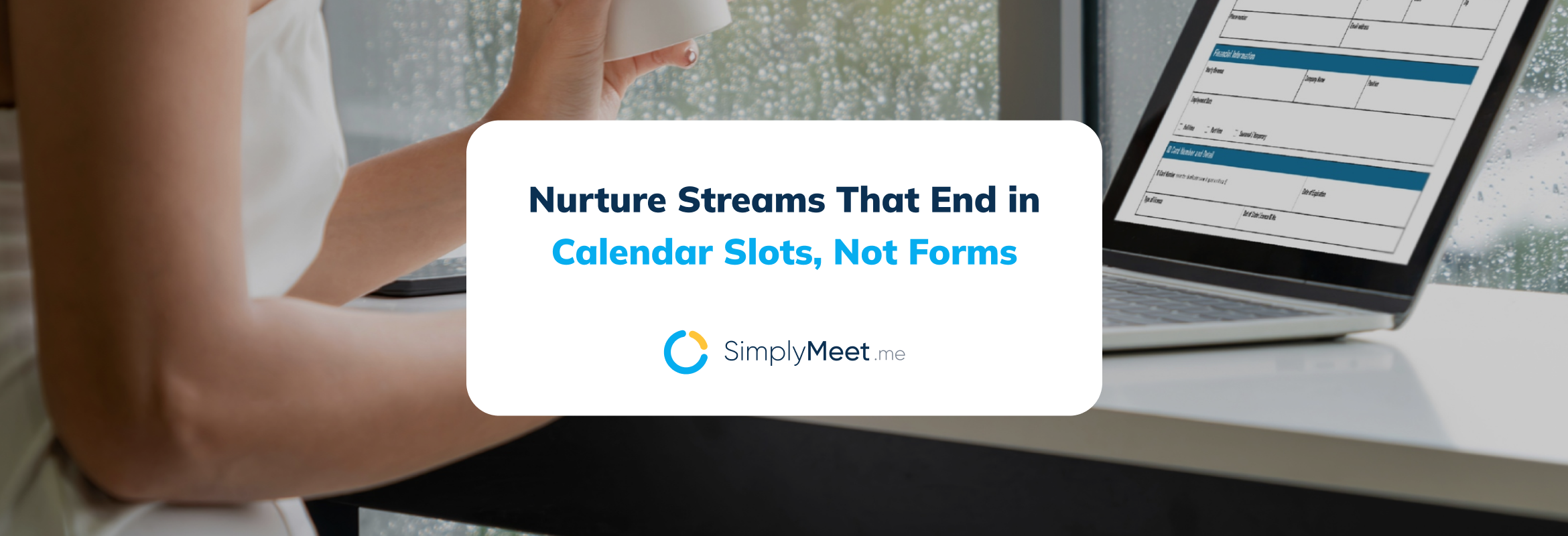Maximizing Meeting Bookings with Effective Cold Email Campaigns

In a world where inboxes are overflowing and attention spans are dwindling, crafting a cold email that not only gets opened but also drives action can feel like a daunting task. Yet, cold emailing remains one of the most powerful tools in a marketer’s arsenal—if done right. The challenge lies in breaking through the noise, engaging your prospects, and ultimately converting those emails into valuable meetings.
This article is your guide to mastering the art of cold emailing. We’ll explore the psychological foundations behind why people respond, dive into advanced techniques for engaging high-level prospects, and share strategies that will help you craft emails that maximize your chances of success. Whether you’re new to cold emailing or looking to refine your approach, these insights will equip you with the knowledge and tools to turn your cold emails into warm opportunities.
The Psychological Foundations of Cold Email Success
When it comes to cold emailing, understanding the psychological triggers that influence how people respond can be the difference between your message being opened or ignored. At its core, effective cold emailing isn’t just about what you’re offering—it’s about how you make your prospect feel. This is where understanding prospect behavior becomes crucial.
People respond to cold emails for a variety of reasons, but it often boils down to their psychological state at the moment they receive your message. For instance, the principle of cognitive overload suggests that when people are overwhelmed with information, they are more likely to ignore messages that require significant effort to process. This means your email needs to be clear, concise, and instantly engaging, providing value without demanding too much from the reader.
Leveraging cognitive biases can significantly improve your cold email’s effectiveness. Take the Reciprocity Principle, for example: when you give something valuable first—like a free resource or insightful advice—people feel a subconscious urge to return the favor. This doesn’t mean you need to offer something tangible; sometimes, simply demonstrating genuine interest in helping the prospect can be enough to trigger this bias.
Authority Bias
Another powerful bias is the Authority Bias, where people are more likely to respond favorably to someone they perceive as an expert. By showcasing your expertise or aligning your message with credible sources, you can tap into this bias, making your email more persuasive.
While many cold email strategies emphasize highlighting pain points to spur action, this approach isn’t always the most effective. In fact, focusing on positive reinforcement—showing prospects how their situation could improve, rather than reminding them of their current struggles—can lead to more favorable outcomes. People are naturally drawn to positive emotions, and by appealing to their aspirations rather than their anxieties, you can create a more welcoming and engaging interaction.
Understanding these psychological foundations allows you to craft cold emails that resonate on a deeper level, increasing the likelihood of securing that all-important meeting booking.
Crafting the Perfect Cold Email
Creating a cold email that stands out in a crowded inbox is more art than science. It requires a blend of personalization, strategic content, usage of cold email software, and just the right touch of unpredictability to capture your recipient’s attention. But what exactly makes a cold email “perfect”?
Personalization vs. Customization
Let’s start with personalization. Many believe that dropping in the recipient’s name counts as personalization, but in reality, that’s just the tip of the iceberg. True personalization goes deeper—it involves understanding your prospect’s needs, interests, and pain points, and crafting a message that speaks directly to them.
For example, if you know a prospect recently launched a new product, you might mention how your solution can enhance that specific offering. This shows you’ve done your homework and are genuinely interested in helping them succeed, rather than just blasting out a generic message.
The Unpopular Truth About Email Length
There’s a common belief that shorter emails are always better, but that’s not necessarily true. While brevity can be effective, sometimes a longer email is needed to fully convey your value proposition, especially if your offering is complex.
Long-form cold emails can work wonders when they’re structured well, guiding the reader through a narrative that builds trust, provides value, and addresses potential objections—all within a single email. The key is to ensure that every word counts and that your email maintains the reader’s interest from start to finish.
Subject Lines That Defy Conventions
Subject lines are your first (and sometimes only) chance to make an impression. Conventional wisdom says to keep it short and to the point, but unconventional subject lines can stand out and pique curiosity.
Think about posing a provocative question, making a bold statement, or even using humor to draw the reader in. For instance, a subject line like “This email could change how you do business” might intrigue the reader enough to open and explore further.
The Power of the Unexpected
Finally, don’t underestimate the power of surprise. Including an unexpected element in your email—whether it’s an unusual statistic, a surprising fact about their industry, or a novel solution to a common problem—can capture attention and prompt action. People are naturally drawn to things that break the norm, so by introducing something unexpected, you’re more likely to get them to engage with your message.
Cold Emailing Strategies That Maximize Meeting Bookings
Image by Mohamed Hassan from Pixabay
Crafting the perfect cold email is just the beginning. To truly maximize meeting bookings, you need to think strategically about how your emails are delivered, who they’re sent to, and how they’re framed. Let’s dive into some strategies that can elevate your cold emailing game to new heights.
The Multi-Touch Sequence
One of the biggest mistakes in cold emailing is relying on a single email to do all the heavy lifting. The reality is, most people don’t respond to the first email they receive from an unknown sender. This is where the multi-touch sequence comes into play. By crafting a series of emails that gradually build trust and nurture your prospect, you increase the likelihood of eventually securing a meeting.
This approach is particularly effective in improving customer retention by consistently providing value and staying engaged with your audience. Think of the first email as an introduction—a way to get on their radar. The follow-up emails can then offer more value, address potential objections, and remind them of your initial message. Over time, this approach creates a sense of familiarity, making your recipient more likely to respond positively. It’s about playing the long game, where each touchpoint brings you closer to your goal.
The “Less Is More” Approach
Contrary to what some might believe, sending out a high volume of emails isn’t always the best strategy. In fact, sending fewer, more targeted emails can yield better results. The “less is more” approach focuses on quality over quantity, ensuring that each email is thoughtfully crafted and tailored to the recipient.
When you take the time to understand your audience and craft messages that speak directly to their needs, you’re more likely to engage them. Instead of bombarding your entire contact list, segment your audience and personalize your approach. This not only improves your chances of getting a response but also reduces the risk of your emails being marked as spam.
Segmenting Your Audience
Speaking of segmentation, this is a critical component of any successful cold email campaign. Segmenting your audience using email sequencing tools allows you to tailor your messages to specific groups, making your emails more relevant and impactful. For example, if you’re reaching out to both small businesses and large enterprises, the challenges they face are likely very different. A one-size-fits-all email won’t resonate with both groups.
By analyzing sales data and segmenting your audience based on factors like industry, company size, or job role, you can craft messages that address their unique pain points and goals. This not only increases the relevance of your emails but also shows that you’ve taken the time to understand their specific needs, which can go a long way in building trust.
The Unpopular Strategy of Negative Framing
Here’s an unconventional strategy that might seem counterintuitive at first: negative framing. This involves using reverse psychology and highlighting what the recipient might miss out on if they don’t take action. While this approach can be risky, it can also be incredibly effective when done right.
For instance, instead of focusing solely on the benefits of booking a meeting, you might highlight the potential downsides of not doing so. “Don’t let another quarter go by without addressing [specific pain point]” or “Avoid falling behind your competitors—schedule a meeting today.” This technique taps into the fear of loss, which can be a powerful motivator. When used sparingly and in the right context, negative framing can provoke a strong response and drive action.
Maximizing meeting bookings through cold emails isn’t about following a single formula—it’s about understanding your audience, crafting a multi-touch sequence that nurtures relationships, and employing strategies like segmentation and negative framing to provoke action. By focusing on these elements, you can transform your cold emails from mere messages into powerful tools that drive results.
Advanced Cold Email Techniques for High-Level Prospects
When it comes to reaching high-level prospects like C-level executives, your approach to cold emailing needs to be as sharp and sophisticated as the audience you’re targeting. These are busy individuals with overflowing inboxes, so the traditional cold email tactics simply won’t cut it. Here’s how you can elevate your strategy to engage these high-value targets effectively.
Account-Based Emailing (ABE)
One of the most effective ways to reach C-level executives is through Account-Based Emailing (ABE). This strategy involves treating each high-value account as a market of one, requiring deep research and a tailored approach. Unlike mass emailing, ABE demands that you dig into the specific challenges and goals of the company and its leaders.
Start by understanding the company’s strategic priorities, recent developments, and the executive’s role within these contexts. For instance, if you’re targeting a CFO, you might focus on how your solution can streamline financial operations or enhance ROI on recent investments. Craft your email to speak directly to their pain points and aspirations, using language that resonates with their specific responsibilities. By demonstrating that you’ve done your homework, you show respect for their time and increase the chances of getting a response.
The Art of Pre-Email Engagement
Before you even hit send on that cold email, consider warming up your prospect through email warming tools for pre-email engagement. This technique can also involve interacting with your target on social media platforms like LinkedIn before reaching out via email. Simple actions such as liking their posts, commenting on their articles, or sharing relevant content can make your name familiar to them. When your email eventually lands in their inbox, it doesn’t feel entirely out of the blue—there’s a sense of recognition that can dramatically increase response rates.
Moreover, these interactions provide valuable insights into what matters most to your prospect, allowing you to fine-tune your email content. For instance, if a CEO frequently posts about sustainability, you could tailor your email to highlight how your product or service supports environmental initiatives. This not only shows that you’re paying attention but also aligns your message with their values.
The Controversial Use of Humor and Sarcasm
Humor in cold emails is a double-edged sword—it can either disarm and engage or backfire spectacularly. However, when targeting high-level prospects, humor and sarcasm, if used judiciously, can set your email apart from the sea of serious and often dull messages they receive daily.
The key is to strike the right balance. For instance, a light-hearted comment about the universal challenges of leadership, or a clever quip that ties into your pitch, can make your email more relatable and memorable. Just be careful not to overdo it—humor should be subtle and in good taste. If your prospect has a public persona that suggests they appreciate a bit of wit, you might take a slightly bolder approach. On the other hand, if they’re known for their no-nonsense attitude, it’s better to keep things more straightforward.
Wrapping Up
Cold emailing is an ever-evolving art, and staying ahead means constantly adapting and learning. The landscape is always shifting, so what works today might need tweaking tomorrow. By integrating your cold email efforts with broader sales and marketing strategies, you create a cohesive, omnichannel approach that boosts lead generation and conversion.
Remember, success in cold emailing isn’t about finding a one-size-fits-all solution. It’s about experimenting, iterating, and optimizing. Keep refining your approach, stay curious, and don’t be afraid to try something new. Your next great email campaign is just a tweak away!



Comments
0 commentsNo comments yet